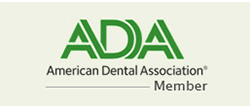Skillful Pediatric Orthodontics For Better Children's Dental Health
Peter A. Rouff DMD PLLC of Tonawanda, New York, takes your children's dental health seriously. He uses pediatric orthodontics to stop problems fast and to accurately correct those that have already developed.
Good Dental Health Begins Early
The American Dental Association recommends that a child first visit the family dentist between the ages of six and 12 months, or while the child's primary (baby) teeth are erupting. It is an excellent time to lay the foundation for a lifetime of good dental habits.
At this early age, the pattern of dental eruption can be seen, and the parent can be alerted to developmental changes that might occur. This allows the child's first experiences with the dentist to be positive. It also helps establish a good attitude toward dental care.
At the first checkup, you and your child probably will receive instructions on proper oral care and advice on the importance of a proper diet. Thereafter, regular visits will be necessary to detect problems early and to maintain good dental health.
Another Important Visit
The American Association of Orthodontists recommends that a child's first visit to an orthodontist take place when an orthodontic problem is first detected. Depending on the nature of the problem, this first visit could take place as early as age two or three, as the primary teeth erupt.
Whether or not an orthodontic problem is detected, however, a child should visit an orthodontist for a checkup no later than age seven. This may surprise you because orthodontic treatment usually is associated with adolescence.
Although treatment will not necessarily begin at this early age, an examination is important to ensure maximum dental health for your child. An orthodontic examination is advisable any time a particular problem is noted by the parent, family dentist, or child's physician. The following early warning signs may indicate that your child should have an orthodontic examination:
Early or Late Loss of Teeth
Difficulty in Chewing or Biting
Mouth Breathing
Finger Sucking or Other Oral Habits
Crowding, Misplaced, or Blocked-out Teeth
Jaws That Shift or Make Sounds
Speech Difficulty
Biting the Cheek or into the Roof of the Mouth
Protruding Teeth
Teeth That Meet in an Abnormal Manner or Don't Meet at All
Facial Imbalance
Jaws That Protrude or Retrude
Grinding or Clenching of the Teeth














